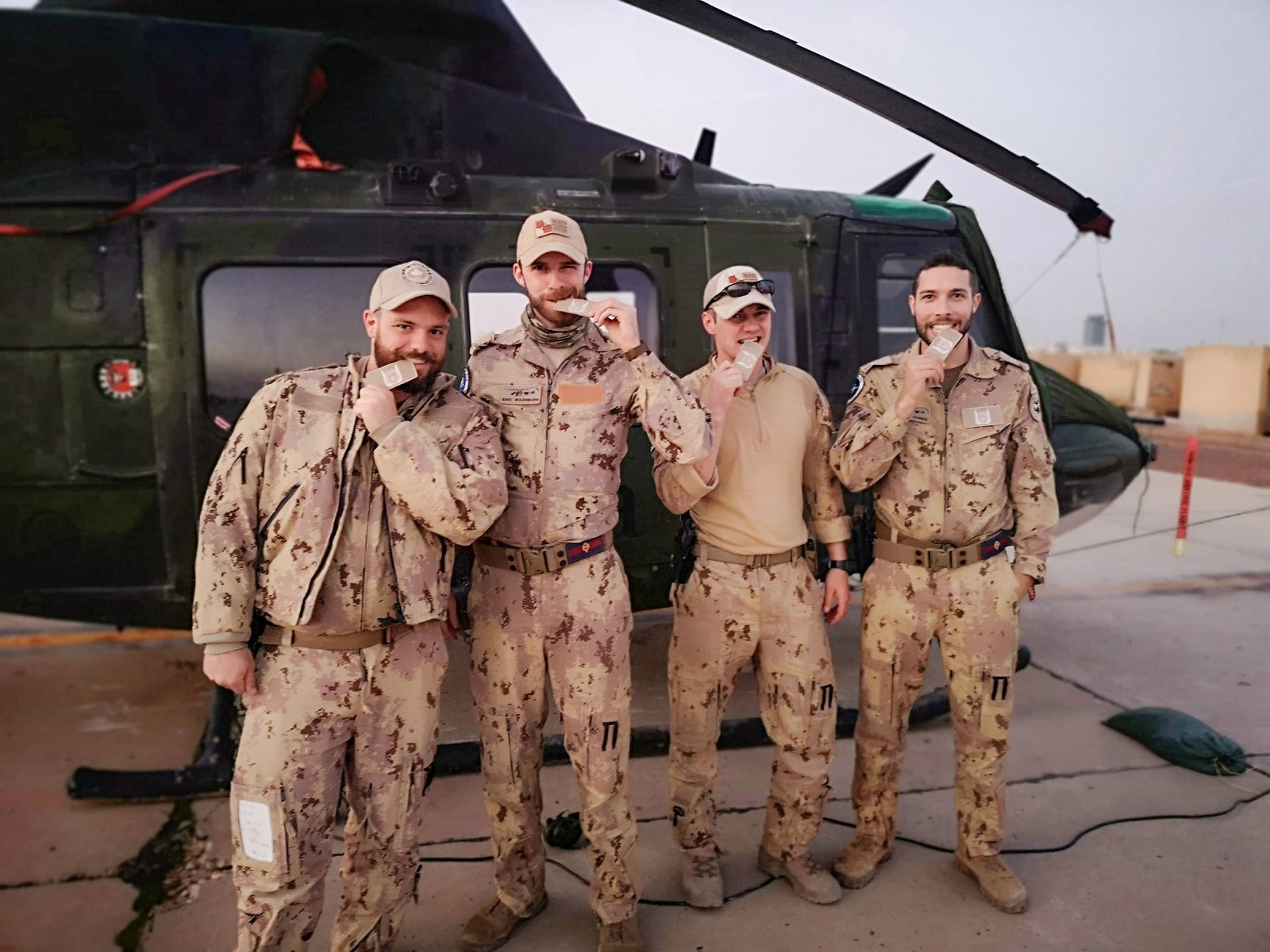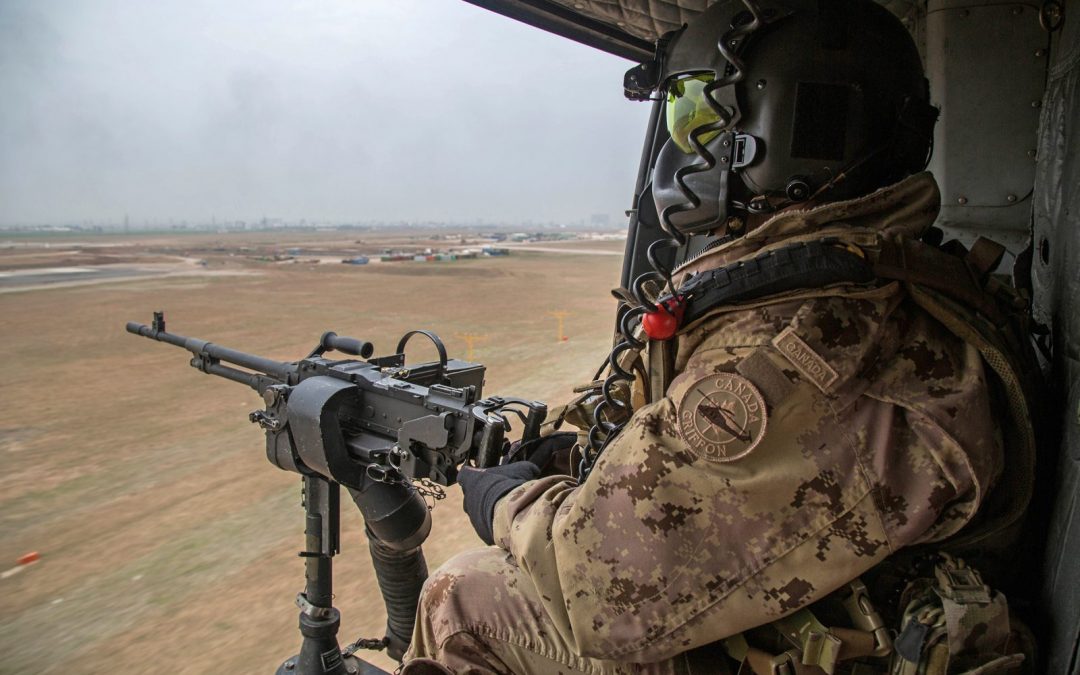by Royal Canadian Air Force
Door gunners from the Canadian Army who support Royal Canadian Air Force tactical aviation operations and possess specific qualifications are now entitled to a flight crew badge.
“It’s my pleasure to introduce the newest specialist flight crew badge, entitled the tactical aviation door gunner badge,” said LGen Al Meinzinger, commander of the Royal Canadian Air Force.
“Flying badges are intended to recognize exceptionally demanding qualifications in an intrinsically hazardous field of activity. This badge will specifically recognize the Canadian Army-supplied door gunners and the knowledge of Canadian Army tactics and battlefield functions that they bring to the tactical aviation community.”
Door gunners serving on Operation Presence were presented with their badges at Camp Castor in Gao, Mali, on January 10, 2019. A few days later, on January 14, Meinzinger and Chief Warrant Officer Denis Gaudreault, RCAF command chief warrant officer, presented badges to door gunners during their visit to Operation Impact personnel in Iraq.
To be eligible for a badge, a soldier must successfully complete the tactical aviation door gunner course and one of the following:
- Either QL3 (qualification level 3) infantry, field artillery, air defence artillery, armoured or combat engineer, or
- QL3 of another applicable occupation that is recommended on a case-by-case basis by the commanding officer of a tactical aviation squadron and accepted by the A7 (the air training section) at 1 Wing Kingston, Ontario. 1 Wing is responsible for all tactical aviation helicopter squadrons across Canada.
The door gunner qualification attained by RCAF members is incorporated in their basic occupation training, and is therefore already encompassed in their aircrew badges.

Four Army reservists from the Montreal area, serving with the Air Task Force-Iraq on Operation Impact, pose in front of a CH-146 Griffon helicopter after receiving the recently-approved tactical aviation door gunner badge on January 14, 2019. From left are Master Corporal Marc Renaud, Corporal Patrice Corbeil, Corporal Pierre-Michel Demarais and Sergeant Eric Washburn. Photo: MCpl Ron Syllion
More than 100 trained and experienced Canadian Army door gunners supported tactical aviation before the door gunner course was created in 2012; these individuals are also eligible to receive the badge. Among them is Corporal Martin Mario Joannette of the Royal 22e Régiment, who was killed in action during Operation Athena in 2009. The commanders of the Canadian Army and 1 Wing will ensure these “legacy” door gunners are awarded their badges in a fitting manner. However, legacy door gunners must either complete the course before returning to door gunner duties or receive a “prior learning assessment and review” granting them the qualification.
As it will take some time to produce the official badge, production of an interim badge has been authorized to recognize eligible personnel as expeditiously as possible. The interim badge matches the design of the final badge and its production is being coordinated by 1 Wing headquarters in Kingston, Ontario.

